Europe seeks greater autonomy in space traffic management
Saturday, 28 January 2023 23:16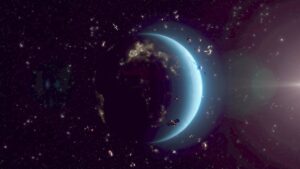
European officials say they’re making progress to achieve “strategic autonomy” in space traffic management by building up both capabilities and policy.
The post Europe seeks greater autonomy in space traffic management appeared first on SpaceNews.
Commerce Department outlines plans for basic space traffic management service
Saturday, 28 January 2023 16:53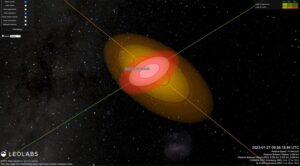
The Commerce Department has outlined the services it proposes to offer free of charge to satellite operators from the space traffic management system it is developing.
The post Commerce Department outlines plans for basic space traffic management service appeared first on SpaceNews.
Camera captures night sky spiral after SpaceX rocket launch
Saturday, 28 January 2023 06:26
Solar System formed from 'poorly mixed cake batter'
Saturday, 28 January 2023 00:44 Earth's potassium arrived by meteoritic delivery service finds new research led by Carnegie's Nicole Nie and Da Wang. Their work, published in Science, shows that some primitive meteorites contain a different mix of potassium isotopes than those found in other, more-chemically processed meteorites. These results can help elucidate the processes that shaped our Solar System and determined the com
Earth's potassium arrived by meteoritic delivery service finds new research led by Carnegie's Nicole Nie and Da Wang. Their work, published in Science, shows that some primitive meteorites contain a different mix of potassium isotopes than those found in other, more-chemically processed meteorites. These results can help elucidate the processes that shaped our Solar System and determined the com NASA's Juno Team assessing camera after 48th flyby of Jupiter
Saturday, 28 January 2023 00:44 The JunoCam imager aboard NASA's Juno spacecraft did not acquire all planned images during the orbiter's most recent flyby of Jupiter on Jan. 22. Data received from the spacecraft indicates that the camera experienced an issue similar to one that occurred on its previous close pass of the gas giant last month, when the team saw an anomalous temperature rise after the camera was powered on in pre
The JunoCam imager aboard NASA's Juno spacecraft did not acquire all planned images during the orbiter's most recent flyby of Jupiter on Jan. 22. Data received from the spacecraft indicates that the camera experienced an issue similar to one that occurred on its previous close pass of the gas giant last month, when the team saw an anomalous temperature rise after the camera was powered on in pre Data from the first SLS flight to prepare NASA for future Artemis missions
Saturday, 28 January 2023 00:44 NASA continues to evaluate data and learn more about the Space Launch System (SLS) rocket's debut performance during the agency's Nov. 16 Artemis I launch. Following an initial data assessment and review that determined the SLS rocket met or exceeded all performance expectations, SLS engineers are now taking a closer look at the Moon rocket's performance to prepare for the first crewed Artemis m
NASA continues to evaluate data and learn more about the Space Launch System (SLS) rocket's debut performance during the agency's Nov. 16 Artemis I launch. Following an initial data assessment and review that determined the SLS rocket met or exceeded all performance expectations, SLS engineers are now taking a closer look at the Moon rocket's performance to prepare for the first crewed Artemis m Searching for buried treasure on Mars with RIMFAX
Saturday, 28 January 2023 00:44 What do the Perseverance rover and Superman have in common? They both can "see" through solid rock! Superman has X-ray vision whereas Perseverance has RIMFAX, a ground penetrating radar or GPR, located on the lower rear of the rover. RIMFAX uses radio waves to image the subsurface rock layers as the rover drives along.
It is the first instrument of its kind sent by NASA to Mars and can "se
What do the Perseverance rover and Superman have in common? They both can "see" through solid rock! Superman has X-ray vision whereas Perseverance has RIMFAX, a ground penetrating radar or GPR, located on the lower rear of the rover. RIMFAX uses radio waves to image the subsurface rock layers as the rover drives along.
It is the first instrument of its kind sent by NASA to Mars and can "se NASA selects nine technologies for commercial flight tests
Saturday, 28 January 2023 00:44 selected nine space technologies for flight testing to advance innovations that address mission needs for both the agency and the commercial space industry.
Selected as part of the NASA's 2022 TechFlights solicitation, these technologies will fly aboard commercial suborbital vehicles such as high-altitude balloons, aircraft following parabolic flight profiles, suborbital rocket-powered sys
selected nine space technologies for flight testing to advance innovations that address mission needs for both the agency and the commercial space industry.
Selected as part of the NASA's 2022 TechFlights solicitation, these technologies will fly aboard commercial suborbital vehicles such as high-altitude balloons, aircraft following parabolic flight profiles, suborbital rocket-powered sys RIT scientists reach a milestone in the search for continuous gravitational waves
Saturday, 28 January 2023 00:44 Scientists on the hunt for a previously undetected type of gravitational waves believe they are getting close and have refined techniques to use in upcoming observational runs. Researchers from the LIGO-Virgo-KAGRA Collaboration outlined the most sensitive search to date for continuous gravitational waves from a promising source in a paper recently published in the Astrophysical Journal Letters.
Scientists on the hunt for a previously undetected type of gravitational waves believe they are getting close and have refined techniques to use in upcoming observational runs. Researchers from the LIGO-Virgo-KAGRA Collaboration outlined the most sensitive search to date for continuous gravitational waves from a promising source in a paper recently published in the Astrophysical Journal Letters. Starry tail tells the tale of dwarf galaxy evolution
Saturday, 28 January 2023 00:44 A giant diffuse tail of stars has been discovered emanating from a large, faint dwarf galaxy. The presence of a tail indicates that the galaxy has experienced recent interaction with another galaxy. This is an important clue for understanding how so called "ultra-diffuse" galaxies are formed.
Astronomers using the Subaru Telescope and the Canada-France-Hawaii Telescope found a tail of star
A giant diffuse tail of stars has been discovered emanating from a large, faint dwarf galaxy. The presence of a tail indicates that the galaxy has experienced recent interaction with another galaxy. This is an important clue for understanding how so called "ultra-diffuse" galaxies are formed.
Astronomers using the Subaru Telescope and the Canada-France-Hawaii Telescope found a tail of star NASA's Fermi detects first gamma-ray eclipses from 'Spider' Systems
Saturday, 28 January 2023 00:44 Scientists have discovered the first gamma-ray eclipses from a special type of binary star system using data from NASA's Fermi Gamma-ray Space Telescope. These so-called spider systems each contain a pulsar - the superdense, rapidly rotating remains of a star that exploded in a supernova - that slowly erodes its companion.
An international team of scientists scoured over a decade of Fermi
Scientists have discovered the first gamma-ray eclipses from a special type of binary star system using data from NASA's Fermi Gamma-ray Space Telescope. These so-called spider systems each contain a pulsar - the superdense, rapidly rotating remains of a star that exploded in a supernova - that slowly erodes its companion.
An international team of scientists scoured over a decade of Fermi Lynk Global finalizing ground station for direct-to-smartphone services
Friday, 27 January 2023 20:47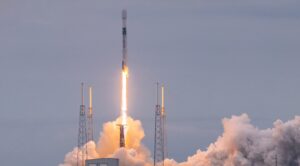
Lynk Global is close to completing a ground station in Hawaii as part of plans to connect its growing constellation of small satellites to standard smartphones this spring.
The post Lynk Global finalizing ground station for direct-to-smartphone services appeared first on SpaceNews.
SpaceX preparing for Super Heavy static-fire test
Friday, 27 January 2023 20:34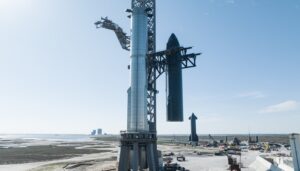
SpaceX could attempt a long-awaited static-fire test of all 33 Raptor engines in its Super Heavy booster as soon as next week, one of the final technical milestones before an orbital launch attempt, a company executive said Jan.
Satellite billed as the ‘future GPS’ begins key tests
Friday, 27 January 2023 19:03
L3Harris announced Jan. 26 it delivered the Navigation Technology Satellite-3 to the U.S. Air Force
The post Satellite billed as the ‘future GPS’ begins key tests appeared first on SpaceNews.
L3Harris ‘optimistic’ Aerojet Rocketdyne acquisition will close in 2023
Friday, 27 January 2023 17:10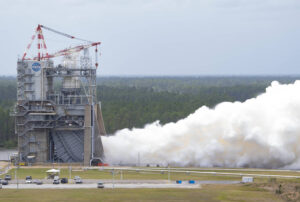
Christopher Kubasik, CEO of L3Harris Technologies, said Jan. 27 regulators continue to review the company’s proposed $4.7 billion acquisition of Aerojet Rocketdyne and expects the merger to close in 2023.
The post L3Harris ‘optimistic’ Aerojet Rocketdyne acquisition will close in 2023 appeared first on SpaceNews.

